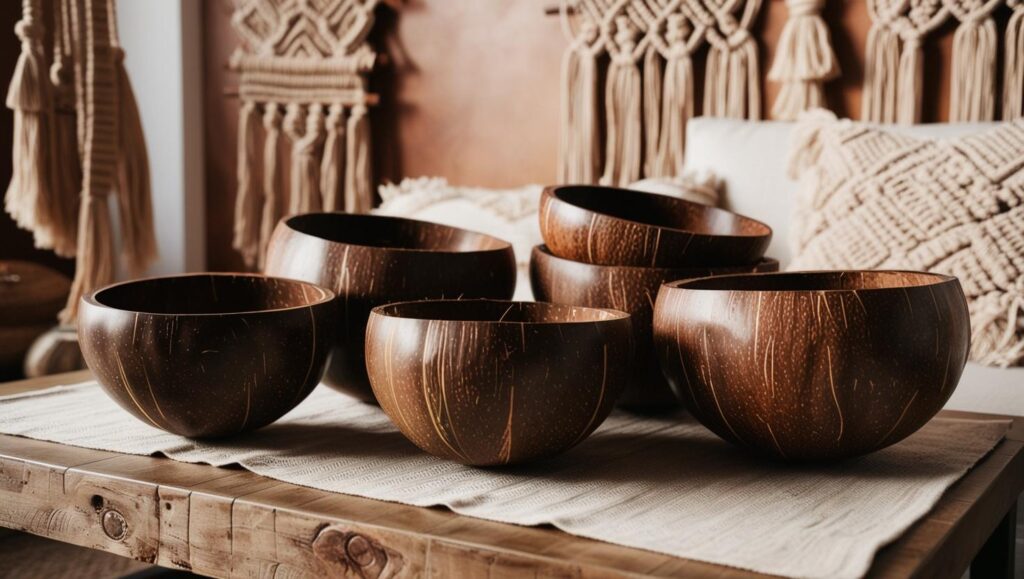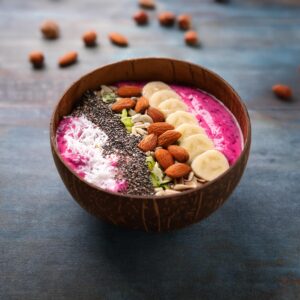The Coconut Bowl Industry
Explore the fascinating journey of coconut bowls from discarded shells to beautiful, functional kitchenware, and its positive impact on coconut-producing regions.
From Trash to Treasure: The Coconut Bowl Industry
In a world increasingly aware of environmental impacts and sustainability, the coconut bowl industry stands out as a beacon of innovation and eco-friendliness. What was once considered agricultural waste is now being transformed into beautiful, functional dinnerware that graces tables around the world. This transformation from trash to treasure is not only a testament to human ingenuity but also a step towards a more sustainable future. Let’s dive into the fascinating world of coconut bowls and explore how they are made, their benefits, and their impact on both local communities and the environment.
The Birth of the Coconut Bowl Industry
The Problem of Coconut Waste
Coconuts are a staple in many tropical regions, with millions harvested each year for their water, milk, and meat. However, the shells, which make up a significant portion of the coconut, often end up as waste. Traditionally, these shells were either burned or left to decompose, contributing to environmental pollution and wasted resources.
Turning Waste into Opportunity
The idea of transforming coconut shells into bowls was born out of a desire to reduce waste and create something valuable from what would otherwise be discarded. This innovative approach not only addresses the problem of coconut waste but also taps into the growing demand for sustainable and eco-friendly products.
### Craftsmanship and Tradition
The creation of coconut bowls is deeply rooted in craftsmanship and tradition. Skilled artisans in countries like Vietnam, Thailand, and Indonesia handcraft each bowl, preserving traditional techniques while providing modern consumers with unique and beautiful products. This craftsmanship ensures that each coconut bowl is one-of-a-kind, with natural variations in texture and color that add to their charm.
## The Making of a Coconut Bowl
### Sourcing and Preparation
The journey of a coconut bowl begins with sourcing the right coconuts. Only mature coconuts are used, as they have thicker shells that are ideal for crafting bowls. Once harvested, the shells are cleaned and cut to size, preparing them for the transformation process.
### Shaping and Sanding
The next step involves shaping the coconut shells into bowls. This is done by skilled artisans who carefully sand the shells to create a smooth, even surface. The sanding process is crucial, as it not only shapes the bowl but also reveals the natural beauty of the coconut’s grain.
### Polishing and Finishing
After sanding, the bowls are polished to enhance their natural luster. Some bowls are left with their natural finish, while others may be coated with a food-safe lacquer for added durability and shine. This finishing touch not only makes the bowls more attractive but also helps protect them from wear and tear.
### Quality Control
Before reaching consumers, each coconut bowl undergoes a rigorous quality control process. This ensures that only the best bowls, free from cracks or defects, make it to market. This commitment to quality is part of what makes coconut bowls so appealing to consumers seeking both beauty and functionality.
## The Benefits of Coconut Bowls
### Eco-Friendly and Sustainable
One of the most significant benefits of coconut bowls is their eco-friendliness. By repurposing coconut shells that would otherwise be discarded, the coconut bowl industry helps reduce waste and minimize environmental impact. Additionally, the production process is relatively low-energy and relies on natural materials, making it a sustainable choice for eco-conscious consumers.
### Supporting Local Economies
The coconut bowl industry plays a crucial role in supporting local economies in producing countries. By providing employment opportunities for artisans and workers, the industry helps improve livelihoods and promote economic development. This is particularly important in rural areas, where job opportunities may be limited.
### Versatile and Functional
Coconut bowls are incredibly versatile, making them a popular choice for a wide range of uses. Whether you’re serving up a smoothie bowl, salad, or dessert, coconut bowls add a touch of natural elegance to any dish. Their durability also makes them suitable for both indoor and outdoor dining, making them a staple in many households.
### Aesthetic Appeal
With their unique textures and natural beauty, coconut bowls are more than just functional dinnerware—they’re also a statement piece. Each bowl’s distinct grain and color variations make them a beautiful addition to any table setting, appealing to those who appreciate the beauty of nature.
## The Impact of Coconut Bowls on the Environment
### Reducing Waste
By transforming coconut shells into bowls, the industry significantly reduces the amount of agricultural waste that ends up in landfills or is burned. This not only helps conserve resources but also reduces the carbon footprint associated with waste disposal.
### Promoting Sustainability
The coconut bowl industry promotes sustainability by encouraging the use of natural, renewable materials. Unlike plastic or metal bowls, coconut bowls are biodegradable and can be composted at the end of their life cycle, further minimizing environmental impact.
### Encouraging Conscious Consumption
Coconut bowls are part of a broader movement towards conscious consumption, where consumers are more mindful of the environmental and social impact of their purchases. By choosing eco-friendly products like coconut bowls, consumers can support sustainable practices and contribute to a healthier planet.
## Challenges and Opportunities in the Coconut Bowl Industry
### Meeting Demand
As the popularity of coconut bowls continues to grow, so does the demand. Meeting this demand while maintaining quality and sustainability standards can be challenging. However, it also presents an opportunity for the industry to expand and innovate, finding new ways to increase production without compromising on values.
### Educating Consumers
Educating consumers about the benefits of coconut bowls and their role in sustainability is crucial for the industry’s continued growth. Many consumers are still unaware of the environmental impact of their choices, and raising awareness can help drive demand for eco-friendly products.
### Expanding Product Lines
While coconut bowls are the most well-known product, there is potential for the industry to expand into other areas. By exploring new product lines, such as coconut shell utensils or home decor items, the industry can tap into new markets and further reduce waste.
## The Future of the Coconut Bowl Industry
### Innovation and Technology
As technology continues to advance, there are opportunities for the coconut bowl industry to innovate and improve production processes. This could include developing new techniques for shaping and finishing bowls or finding ways to utilize other parts of the coconut in product creation.
### Collaboration and Partnerships
Collaboration with other industries and organizations can help the coconut bowl industry grow and reach new audiences. By partnering with environmental organizations, for example, the industry can promote sustainability and raise awareness about the benefits of eco-friendly products.
### Global Expansion
While coconut bowls are already popular in many parts of the world, there is potential for further expansion into new markets. By reaching out to consumers in regions where eco-friendly products are gaining traction, the industry can continue to grow and make a positive impact on the environment.
## Conclusion
The coconut bowl industry is a shining example of how innovation and sustainability can go hand in hand. By transforming what was once considered waste into beautiful, functional products, the industry not only reduces environmental impact but also supports local economies and promotes conscious consumption. As more consumers embrace eco-friendly products, the future looks bright for coconut bowls and the broader movement towards sustainability.
Whether you’re a longtime fan of coconut bowls or new to the concept, there’s no denying the impact they have on both our tables and the planet. By choosing coconut bowls, you’re not just adding a touch of natural beauty to your meals—you’re also contributing to a more sustainable and eco-friendly world.
So next time you enjoy a meal from a coconut bowl, take a moment to appreciate the journey from trash to treasure and the positive change it represents.
Mango Black Bean Buddha Bowls
Shop Coconut Bowls
Connect With Us On Social Media@BuddhaBowlsOrg
Instagram
Facebook
Pinterest
Youtube
Twitter
The Coconut Bowl Industry
Course:
Prep Time:
Cook Time:
Total Time:
Servings:
Ingredients
-
()
Instructions
-
()




